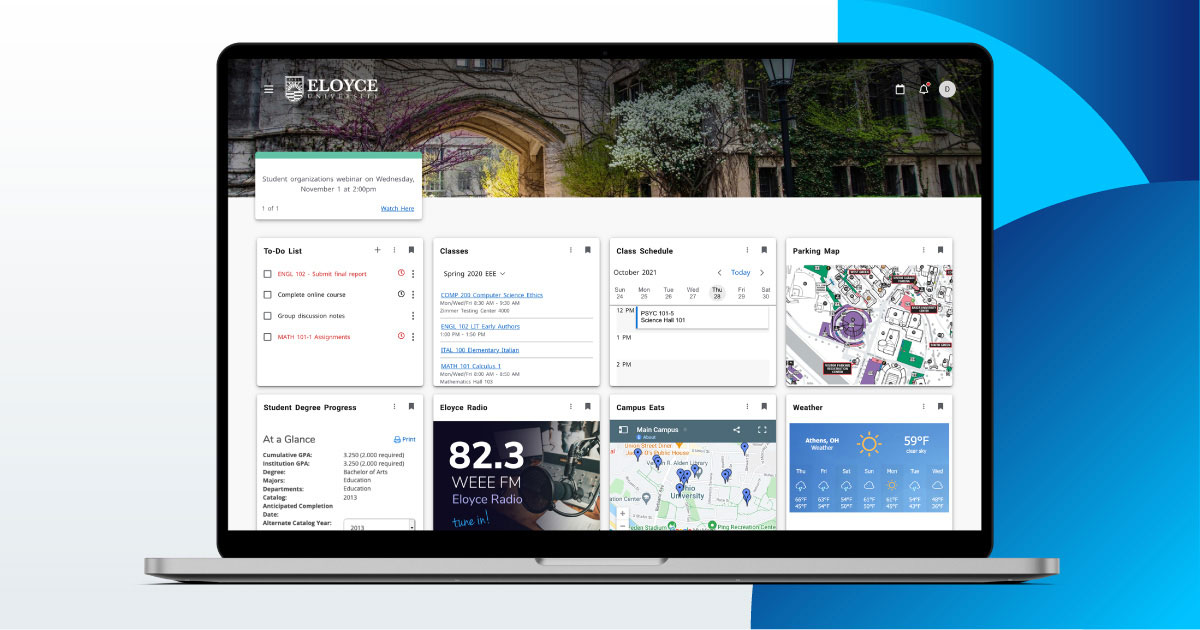Recent surveys show 78% of Gen Z is terrified of accruing debt. Prospective students who don’t see higher education as affordable simply won't apply.
Financial aid professionals know funding already exists to bridge affordability gaps. Students just don't know how to access it. In one academic year, over $2 billion in federal grants will go unclaimed. Millions more in private scholarships will be unused.
In a recent panel, higher ed technology leaders Colleen Conniff, director of scholarships at Oregon State University, and John Gogola, assistant director of financial aid programs at University of Pittsburgh, came together to discuss how the right tools help financial aid offices unlock every dollar for students, connecting them to the funding they both need and qualify for.
With an advanced and intuitive one-stop scholarship database, higher ed professionals can clear the path to enrollment and retention.
Untangling Complex, Opaque, Manual Processes
Before implementing their new scholarship management solution, Oregon State University (OSU) had a homegrown system. "Students didn't like it. They found it hard to navigate and use," says Conniff. "This contributed to a lack of fund utilization. We weren't able to award as many scholarships as we wanted." OSU students tended to use the old system once and never again, providing a clear sign that something wasn't working.
Additionally, OSU had no way to collect stewardship data. This made it challenging to maintain the donor cycle and nurture those relationships effectively.
By contrast, the University of Pittsburgh (Pitt) didn't have a digital scholarship solution in place. "Everything was done very, very manually," says Gogola, explaining the source of inefficiencies for both students and staff. "We didn't even realize some of the issues we were coming across."
Awards were tracked through massive, unwieldy spreadsheets. Students were required to hand in paper applications. And when someone came in to ask about scholarship opportunities, they could be redirected to any number of departments and partners, not one central source. "This all led to a fund utilization problem and not being able to connect students with the dollars that they needed," says Gogola.
Decentralization is not uncommon for scholarship management, as institutions need to account for a wide variety of application models and award letters. But the result can be inconsistent and opaque for students who need funding. OSU specifically sought out a solution that would give partners and staff the flexibility for various templates on the back end, while presenting a unified experience for the students.
"We also wanted to improve fund utilization, because we were not at all where we wanted to be in terms of getting those dollars to our students. And we did not have the ability to track that activity in an effective way," explains Conniff. "The ability to have that insight and transparency into our fund utilization was really critical for us."
Simplifying Scholarships for a More Effective Staff
With streamlined, SaaS-enabled financial aid solutions, students get the help and clarity they need whenever they need it. "Before, we would start awarding in June for the upcoming year and we'd still be awarding in April or sometimes even May. Which was terrible for the students and stewardship," says Gogola. "Now, we're able to get about 90% of our own awards done prior to July."
Efficiency gains from their new system are quickly making an impact throughout Pitt. Gogola notes they've seen an increase in fund utilization by about 10% in their office, and an increase of over 25% in utilization efficiency across the university since implementation.
"We're getting things done quicker," says Gogola, explaining how Pitt is administering roughly 2,500 total unique funds in a timelier manner. "On all fronts, our operational efficiencies have increased."
For OSU, scholarship simplification has transformed the review process. "[Review committees] are no longer reviewing scholarship by scholarship," Conniff says. "They are able to review an entire candidate pool, ranking everybody, and then matching them to scholarships for which they are best suited."
OSU's new system's transparency has also enabled their team to better enforce budgets and streamline a multi-step award approval process. "Now, students are notified more quickly," Conniff says. "Our financial aid office is aware of those awards faster and can adjust award offers if they need to. A lot of efficiency was gained."
Making Funding Clear and Accessible for Students
One key differentiator for OSU and Pitt's new system is that it comes with a database of over 12,000 external funding sources, curated and vetted annually. "We've seen [the database] dramatically increase the amount of external scholarship funding that students are bringing into the university to support their education," Conniff says, estimating an increase of approximately $1.5M after just one academic year.
"That's more dollars for our students," Conniff says. "It also frees us up to make more strategic decisions with our own institutional funding because there is less pressure on those funds. It's a win all around."
OSU estimates they've had about 8,000 students who have submitted 46,000 applications for external scholarships for the next year, all verified without any additional work for the users. The award winners will be able to cover more of their expenses without reaching into their own pockets or taking out another loan, while OSU can fund enrollment and retention boosts without dipping into operating budgets.
"We also find that students are in the system year-round. They now recognize that it's a resource available to them all the time," Conniff says. Because of that, not only have external scholarship applications increased, but there has also been an enormous boost in traffic and submissions for donor-funded and university-based funding opportunities. "Over the past two years, our application volume has gone up by more than 125% for our campus opportunities," Conniff says. As a result, available funds are being put to use, helping to keep students on track for their goals.
A More Accessible, Affordable Path Forward
With a one-stop scholarship management tool, institutions like OSU and Pitt can streamline their processes, significantly increase fund utilization, improve scholarship transparency, and ultimately, better serve their student populations. By investing in these technology solutions, institutions are well-equipped to bridge affordability gaps and make education a more attainable path for all learners.




